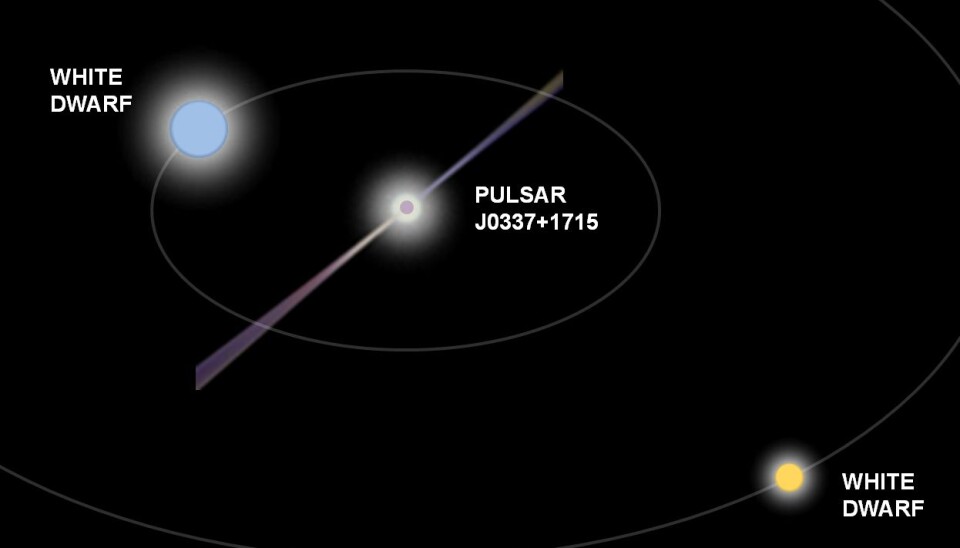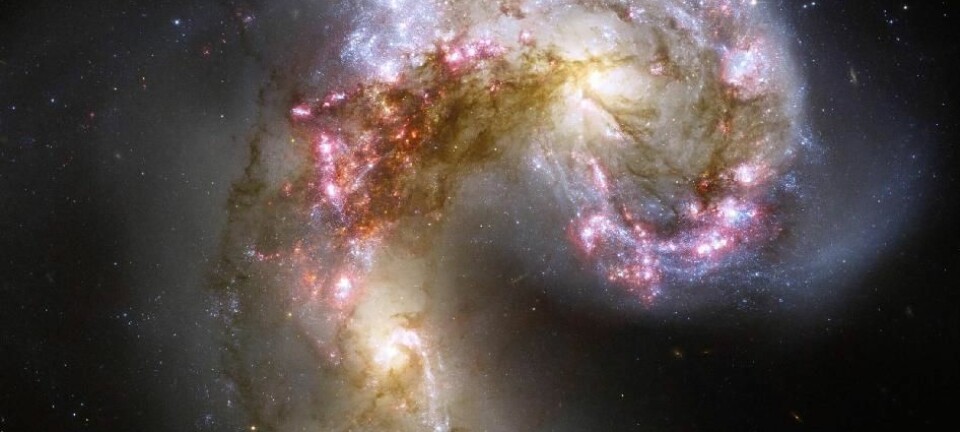
Danish astrophysicist solves mystery about old stars
The recent discovery of a millisecond pulsar orbited by two white dwarfs challenges current theories of their formation. A new semi-analytical model may help explain the formation of this unique triple system.
Since their discovery some 40 years ago, millisecond pulsars – old neutron stars that rotate hundreds of times per second – have been puzzling astronomers across the world.
According to one prevalent theory, these stars are formed as a result of mass transfer from a companion star.
Distant star system challenged existing theories
This explanation was fine – until a distant star system, 4,000 light years from the Earth, consisting of a millisecond pulsar, J0337+1715, and two white dwarves, was discovered.
This system challenged the existing theories – until now.
Danish astrophysicist Thomas Tauris has, together with Ed van den Heuvel of the University of Amsterdam, developed a model that provides new insight to our knowledge of stellar interactions in multiple star systems.
Their study can help explain the increasing number of peculiar binary millisecond pulsars, which may also require a triple system origin.
One of the key results obtained from their investigation is that the observed parameters reflect that both white dwarfs were indeed produced in the present system.
Read more about the model here.
-------------
Read the Danish version of this article at videnskab.dk










